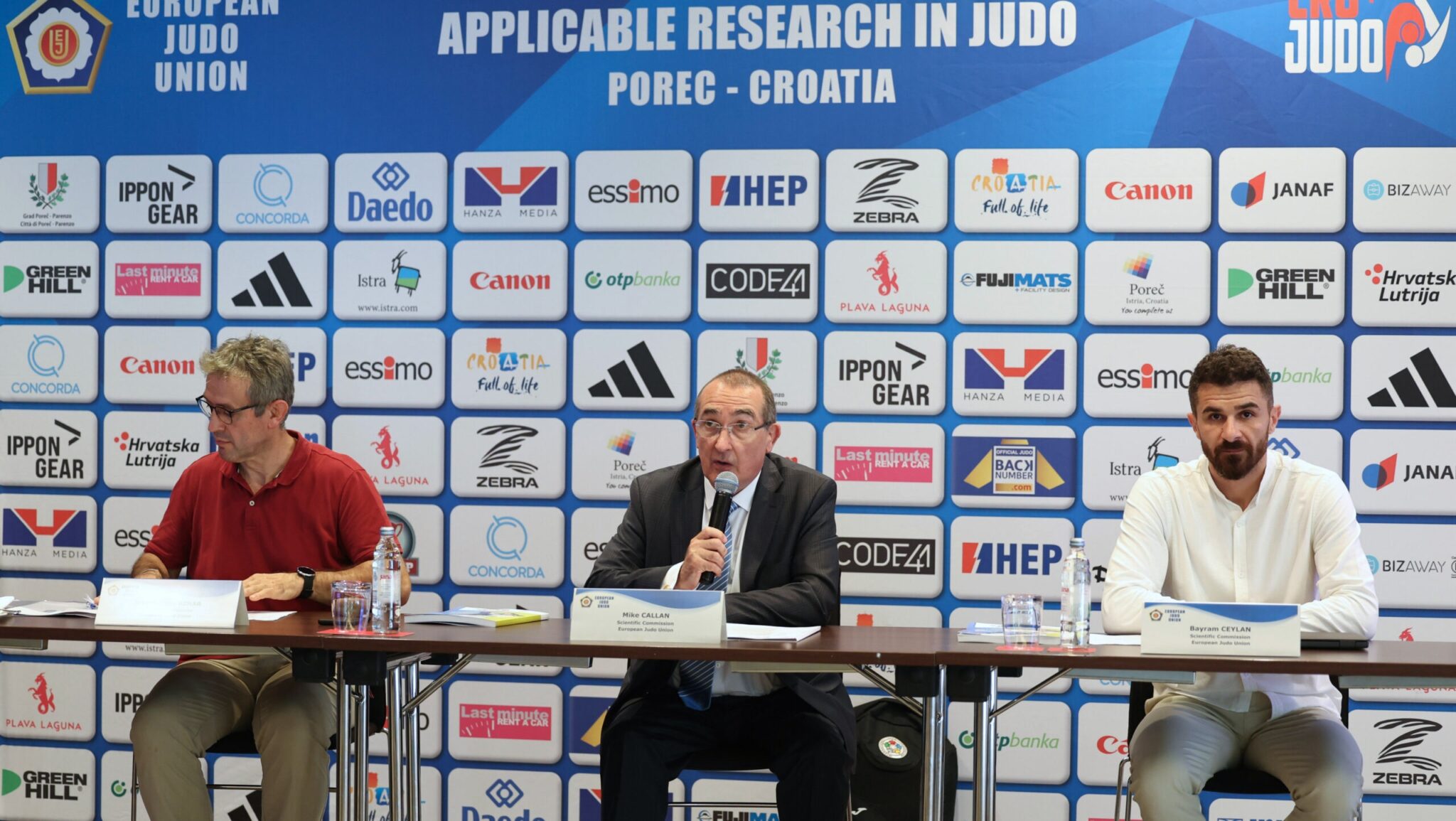The early afternoon of the 7th Scientific and Professional Conference in Porec continued to discover several additional topics including, injuries, weight gain, weight loss, biomechanics analysis and more.
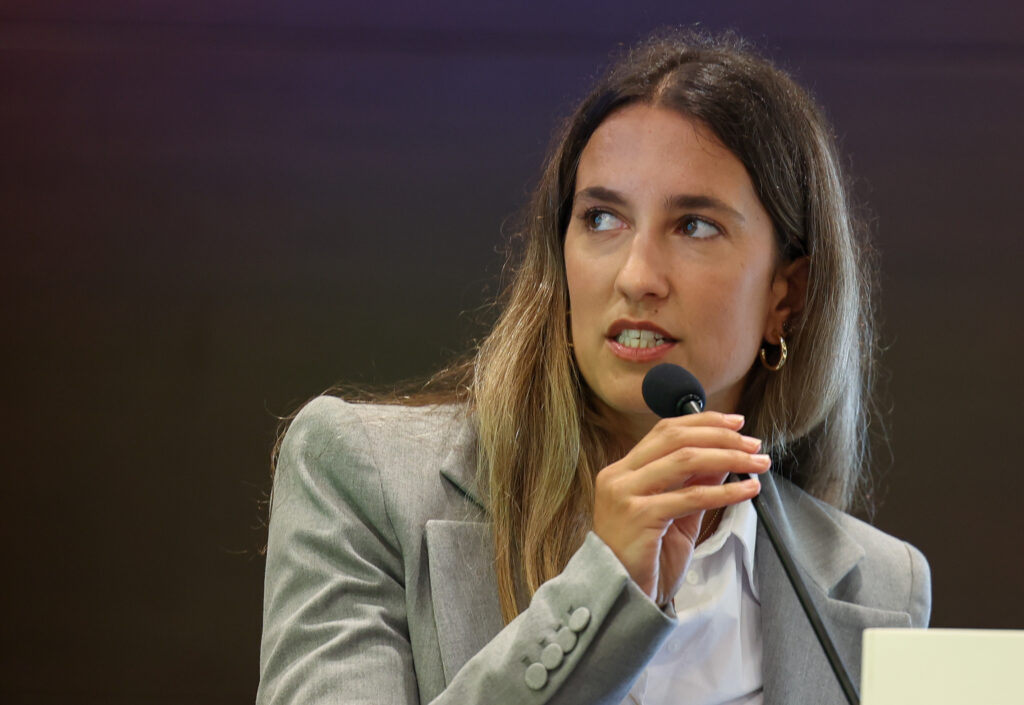
A Retrospective Study
The second phase of the Applicable Research in Judo set off with a presentation by Mireia Yeste-Fabregat on the following topic: Epidemiological Study Of Injuries Among Elite Judo Athletes In The Spanish National Team: A Retrospective Study.
In the introduction of this study it was stated that injury surveillance is essential to protect the health of elite judoka. Specific epidemiological and health data by gender allows for the development of injury surveillance, prevention and rehabilitation methods (Chandran et al., 2019). However, despite numerous studies aimed at determining the incidence of injury in elite judoka, few have compared injury rates between genders or documented injury rates during training.
It further goes onto explain that the aim of this study was to analyse the injury profile of elite male and female judoka of the Spanish national team, including the injury incidence rate, the tissues affected and the injury mechanisms. This study included 32 elite judokas aged between 18 and 32 years. These athletes trained a total of 33,859 hours per year, with women training 13,818 hours and men 17,493 hours. The average Injury/Hour Ratio was 583.78 for women and 564.29 for men. The ratio per 1,000 hours of exposure was 1.71, higher in men (2.0) than in women (1.66).
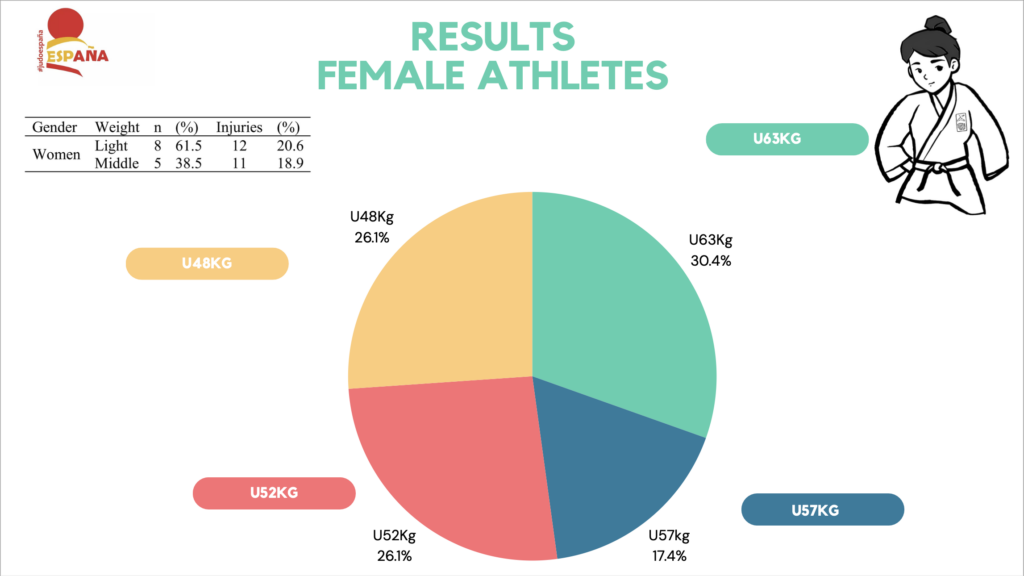
The annual incidence rate in this study was 1.8 per judoka. However, other studies reported higher rates, ranging from 2.57 (Kim & Park, 2021) to 2.73 (Park & Jeong, 2022) injuries per athlete per year. This discrepancy may be due to the larger sample sizes in those studies compared to this one.
It was also discussed that the knee (11 injuries, 20%) and shoulder (11 injuries, 20%) were the most frequently injured joints. In women, the most common injury was to the knee (6 injuries), whereas in men, it was to the shoulder (6 injuries). The difference is minor but noteworthy given the smaller sample size for women. Percentages were calculated using a sample size of 55 instead of 58.
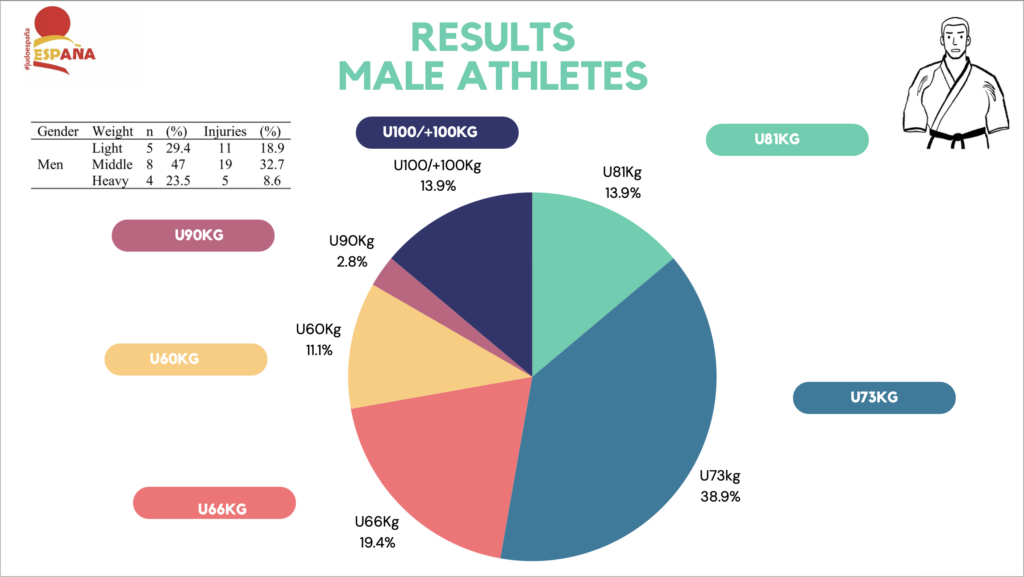
In conclusion it was revealed that weight category and training hours are significant risk factors for injury. There is a higher prevalence of knee and shoulder joint injuries whilst the most recurrent injuries are sprains and muscle tears. Finally, future research is encouraged to investigate the actual severity of judo injuries and to identify potentially modifiable risk factors to mitigate the risk of injury in judo. Read more about this topic via the following link [page 129-134].
WEIGHT GAIN, WEIGHT LOSS AND HYDRATION
Bayram Ceylan also presented his work, Acute Weight Gain And Hydration Status Of Junior Men Judo Athletes During A Real Competition. His study aimed to determine the acute weight gain and hydration status of men judo athletes competing in the senior category during an official competition.
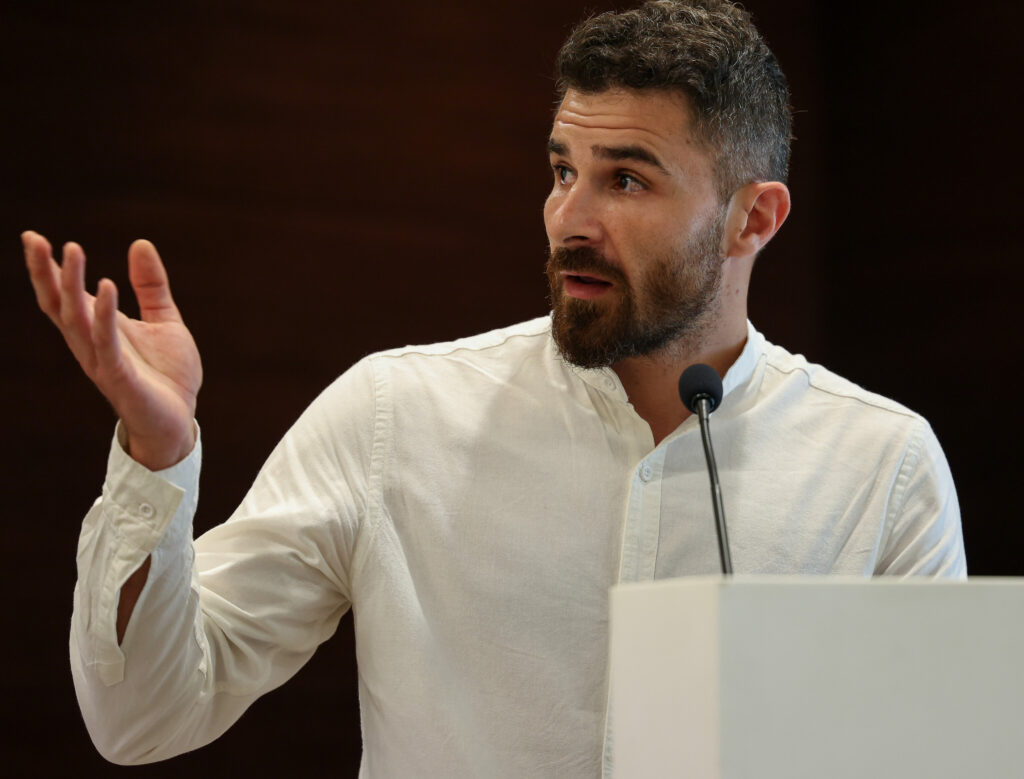
Thirty-three male judo athletes voluntarily participated in this study. Body weight (BW) and urine specific gravity (USG) were measured at the official weigh-in time and just before the competition. A significant increase was observed in the body weight of the athletes between the official weigh-in time (BW=67.5±7.0) and just before the competitions (BW=69.6±7.4) (t(32)=-8.236, p=0.000). The body weight of the athletes increased by 2.1±1.4 (3.1±2.3%) from the official weigh-in to the pre-competition time. Although a significant decrease was observed in the hydration status of the athletes (t(32)= 2.234), p=0.033), 91% of the athletes were dehydrated during the official weigh-in (USG=1.027±0.005) and 85% before the competition (USG=1.025±0.006). The findings of this study revealed that there was a 3% rapid weight gain in male judo athletes before the competition, but the athletes were dehydrated both during the weigh-in and before the competition. Thought, the International Judo Federation’s rule allowing a maximum weight gain of 5% stops athletes from excessive weight gain, it does not prevent them from dehydrating before competition. Read more via the following link [page 41-45].

Jose Morales Aznar delivered on the study, Rapid Weight Loss In Female Judo: Analysis Of Methods And Trends From 1980 To 2023, which aimed to understand athletes’ perceptions of the effects of weight loss on performance and long-term health. The study analysed rapid weight loss methods in female judo athletes from 1980 to the present. A questionnaire based on the Rapid Weight Loss Questionnaire was used to collect data from 86 Spanish judo team members. The average age of the athletes was 35.6 years, with a weight of 64 kg and 8 years of competitive experience. The prevalence of weight loss methods used over four decades was assessed, highlighting the potential health risks and ethical concerns associated with drastic weight loss in sport. The authors suggest that extreme weight loss practices should be classified as doping because of their health risks, unfair competitive advantage and violation of the principles of sportsmanship. Read more via the following link [page 83-87].
Presented research studies vol 2
| EPIDEMIOLOGICAL STUDY OF INJURIES AMONG ELITE JUDO ATHLETES IN THE SPANISH NATIONAL TEAM: A RETROSPECTIVE STUDY – Yeste-Fabregat, M., Orozco, L., Uriarte- Marcos, S., Carratalá-Bellod |
| ACUTE WEIGHT GAIN AND HYDRATION STATUS OF JUNIOR MEN JUDO ATHLETES DURING A REAL COMPETITION – Bayram Ceylan |
| BIOMECHANICAL ANALYSIS OF TECHNICAL ACTIONS USED IN THE 2021 EUROPEAN JUDO CHAMPIONSHIP – BEHAVIORAL PATTERNS AND EFFECTIVENESS – Marco Batista, Jorge Fernandes, Hugo Louro, Raquel Escobar Molina |
| PHYSICAL FITNESS AND PERFORMANCE DURING A SINGLE JUDO MATCH – Emerson Franchini; Monica Yuri Takito; Ursula Ferreira Julio |
| PERIPHERAL NEUROPATHY AND BENEFIT OF JUDO: A PILOT STUDY – Emanuela Pierantozzi, Edoardo Roveta, Marina Grandis, Angelo Schenone, Erika Nerozzi, Valeria Prada |
| RAPID WEIGHT LOSS IN FEMALE JUDO: ANALYSIS OF METHODS AND TRENDS FROM 1980 TO 2023. – Cristina Curto, Jose Morales, Eduardo Carballeira, Marta Sevilla, Misaki Iteya |
| EXPLORING BODY PRESSURE DISTRIBUTION IN MAE UKEMI FALL TECHNIQUE USING E-TEXTILE SENSOR ARRAYS – DelCastillo-Andrés, O., Fernández-García, R., Pastor-Vicedo, J.C., Lira, M.A., Campos-Mesa, M.C., Castañeda-Vazquez, C., Genovesi, E., Krstulović, S., Kuvačić, G., Morvay-Sey, K, Toronjo-Hornillo, L. |
| PHASE ANGLE AND ITS POTENTIAL FOR DETERMINING THE LEVEL OF FITNESS IN YOUTH JUDOKAS MEASURED BY BIOELECTRICAL IMPEDANCE ANALYSIS – Jožef Šimenko |
| TRAINING EXPERIENCE AND MATURATIONAL, MORPHOLOGICAL, AND FITNESS ATTRIBUTES AS SJFT PERFORMANCE PREDICTORS IN MALE AND FEMALE UNDER-16 PORTUGUESE JUDO PLAYERS – Luís Monteiro, Rui Veloso, João Crisóstomo, Manuel Pinto, Ibrahim H. Ceylan |
| EFFECTSOFJUDORULECHANGEONTHEEFFECTIVENESSOFFLOOR TECHNIQUES IN COMPETITORS – Toni Miletić, Husnija Kajmović |
For more information on each topics please visit the following link.
Images: Carlos Ferreira
Author: Szandra Szogedi



